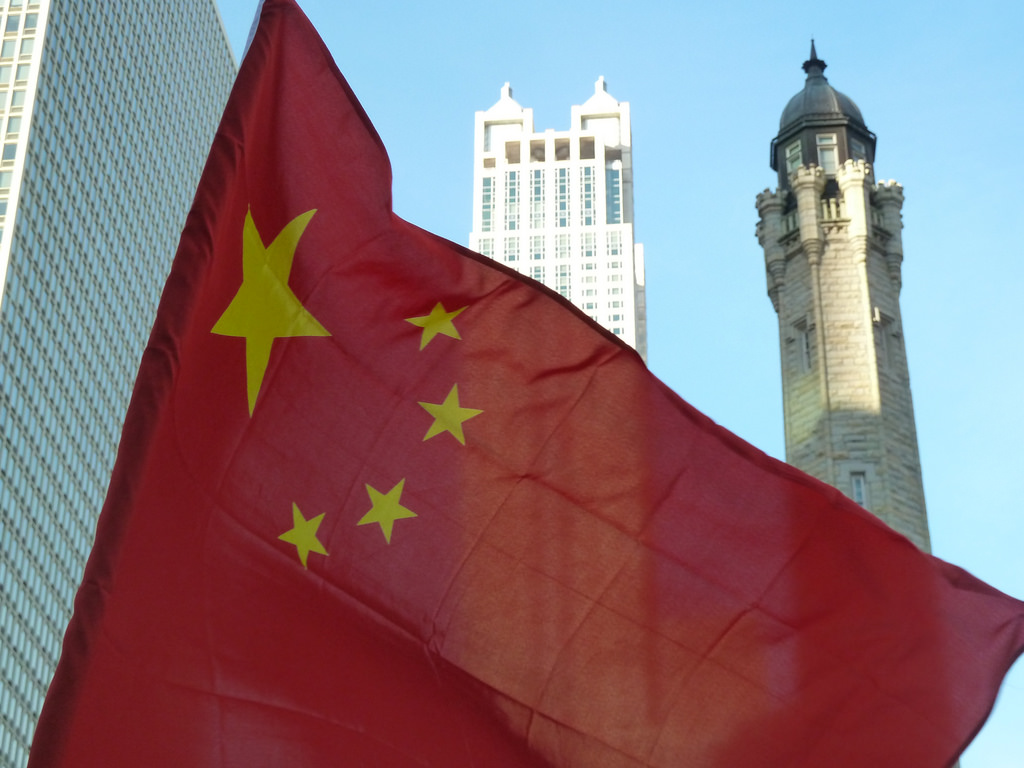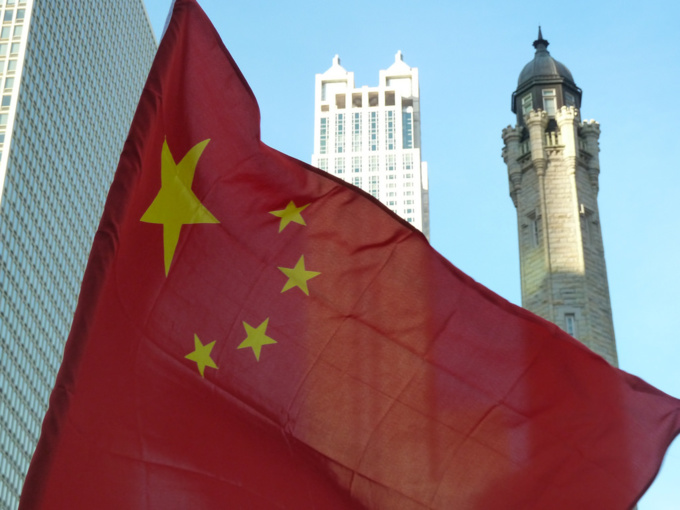Some fronts of the war between the United States and the PRC are located at the Chinese borders, others are next to America. The latter include Latin America, where, like everywhere else, Beijing has achieved great successes in recent years and has significantly shaken the authority of Washington. This is largely helped by the United States itself, and especially by President Trump's motto "America First". Thanks to his policy, China is quickly and successfully filling the vacuum created by the US in various parts of the world.
As noted above, the fight between the two first economies of the world goes for the markets and so far, fortunately, with the use of only soft power. At least, soft power is still the main weapon of the Beijing strategists. However, China's desire to use its great "muscles" is clear. This autumn the first alarm bell sounded - the first military base outside China opened in Djibouti.
More often, however, China builds economic "bridgeheads" and expands them with the help of multi-billion investments. Unlike other regions, Beijing is successfully and actively using another weapon in Latin America. This is cooperation with the Latin American countries in space exploration. The last manifestation of this partnership was the launch of the third satellite for Venezuela held by the Chinese in November.
Beijing is pushing Washington out from the space sector. In Latin America, it operates on a long-established scheme - through state enterprises and companies, which help to present the deals as a normal business in which there is no politics. The main tool in this big "space" game is state-owned companies like China Great Wall Industry Corporation.
The Chinese offensive in Latin America began a third of a century ago. Back in the 1980s, China-Brazil Earth Resources Satellites (CBERS) program was established with the aim of cooperation in space exploration. Over the years, CBERS has created five satellite models for Earth observation. The last result of its activity is the joint satellite CBERS-4.
China and Brazil cooperate in the exploration of space and within the space program BRICS. In July, this informal organization signed an agreement on the joint construction of a satellite group.
Cooperation in space exploration between China and Venezuela began in 2008, when the Venesat-1 communications satellite was launched. In 2012, VRSS-1 was launched and VRSS-2 went to the space at the end of this year.
Beijing also is helping in the exploration of space in Bolivia and Nicaragua. At the same time, in addition to developing, building and launching satellites, the Chinese are training technical specialists for Latin American countries.
All joint space projects in Latin America are similar in one thing - they are funded by the Chinese government, writes NI. Suffice it to say that 70% of the funding for CBERS comes from Beijing. One more example: construction of the 300 millionth Bolivian satellite Tupac Katari was funded mainly by China Development Bank. The Bolivian Space Agency only provided organizational support for the project.
In this regard, it is appropriate to recall the investment of $ 300 million by the People's Liberation Army of China (PLA) in the construction of a satellite tracking base in Argentine Patagonia. America, not without reason, fears that it would be used for military purposes someday.
Chinese funding also forms joint satellite projects with Venezuela. Caracas partially pays with oil.
Of course, Washington has long realized how China uses space to penetrate America's "backyard," as Americans often call it Latin America. The US prefers to cooperate with Latin American countries in the field of space exploration at the level of space agencies. NASA also has programs to build joint satellites, for example, with the same Brazil and Argentina. Of course, private American companies cooperate with the countries of the region. For example, SpaceX in March 2017for the first time successfully launched a Falcon 9 missile with a communication satellite for Latin America, and Boeing helped Mexico in 2015 to build and successfully launch the Morelos-3 satellite.
The most successful year for the Chinese space program was the past, when Beijing had almost caught up with Washington in terms of the number of successful launches - 21 and 22 respectively. By 2020, China plans to complete creation of the navigation satellite system Beidou from 35 satellites and hopes that it will not be inferior to American and European counterparts.
source: nationalinterest.org
As noted above, the fight between the two first economies of the world goes for the markets and so far, fortunately, with the use of only soft power. At least, soft power is still the main weapon of the Beijing strategists. However, China's desire to use its great "muscles" is clear. This autumn the first alarm bell sounded - the first military base outside China opened in Djibouti.
More often, however, China builds economic "bridgeheads" and expands them with the help of multi-billion investments. Unlike other regions, Beijing is successfully and actively using another weapon in Latin America. This is cooperation with the Latin American countries in space exploration. The last manifestation of this partnership was the launch of the third satellite for Venezuela held by the Chinese in November.
Beijing is pushing Washington out from the space sector. In Latin America, it operates on a long-established scheme - through state enterprises and companies, which help to present the deals as a normal business in which there is no politics. The main tool in this big "space" game is state-owned companies like China Great Wall Industry Corporation.
The Chinese offensive in Latin America began a third of a century ago. Back in the 1980s, China-Brazil Earth Resources Satellites (CBERS) program was established with the aim of cooperation in space exploration. Over the years, CBERS has created five satellite models for Earth observation. The last result of its activity is the joint satellite CBERS-4.
China and Brazil cooperate in the exploration of space and within the space program BRICS. In July, this informal organization signed an agreement on the joint construction of a satellite group.
Cooperation in space exploration between China and Venezuela began in 2008, when the Venesat-1 communications satellite was launched. In 2012, VRSS-1 was launched and VRSS-2 went to the space at the end of this year.
Beijing also is helping in the exploration of space in Bolivia and Nicaragua. At the same time, in addition to developing, building and launching satellites, the Chinese are training technical specialists for Latin American countries.
All joint space projects in Latin America are similar in one thing - they are funded by the Chinese government, writes NI. Suffice it to say that 70% of the funding for CBERS comes from Beijing. One more example: construction of the 300 millionth Bolivian satellite Tupac Katari was funded mainly by China Development Bank. The Bolivian Space Agency only provided organizational support for the project.
In this regard, it is appropriate to recall the investment of $ 300 million by the People's Liberation Army of China (PLA) in the construction of a satellite tracking base in Argentine Patagonia. America, not without reason, fears that it would be used for military purposes someday.
Chinese funding also forms joint satellite projects with Venezuela. Caracas partially pays with oil.
Of course, Washington has long realized how China uses space to penetrate America's "backyard," as Americans often call it Latin America. The US prefers to cooperate with Latin American countries in the field of space exploration at the level of space agencies. NASA also has programs to build joint satellites, for example, with the same Brazil and Argentina. Of course, private American companies cooperate with the countries of the region. For example, SpaceX in March 2017for the first time successfully launched a Falcon 9 missile with a communication satellite for Latin America, and Boeing helped Mexico in 2015 to build and successfully launch the Morelos-3 satellite.
The most successful year for the Chinese space program was the past, when Beijing had almost caught up with Washington in terms of the number of successful launches - 21 and 22 respectively. By 2020, China plans to complete creation of the navigation satellite system Beidou from 35 satellites and hopes that it will not be inferior to American and European counterparts.
source: nationalinterest.org



















